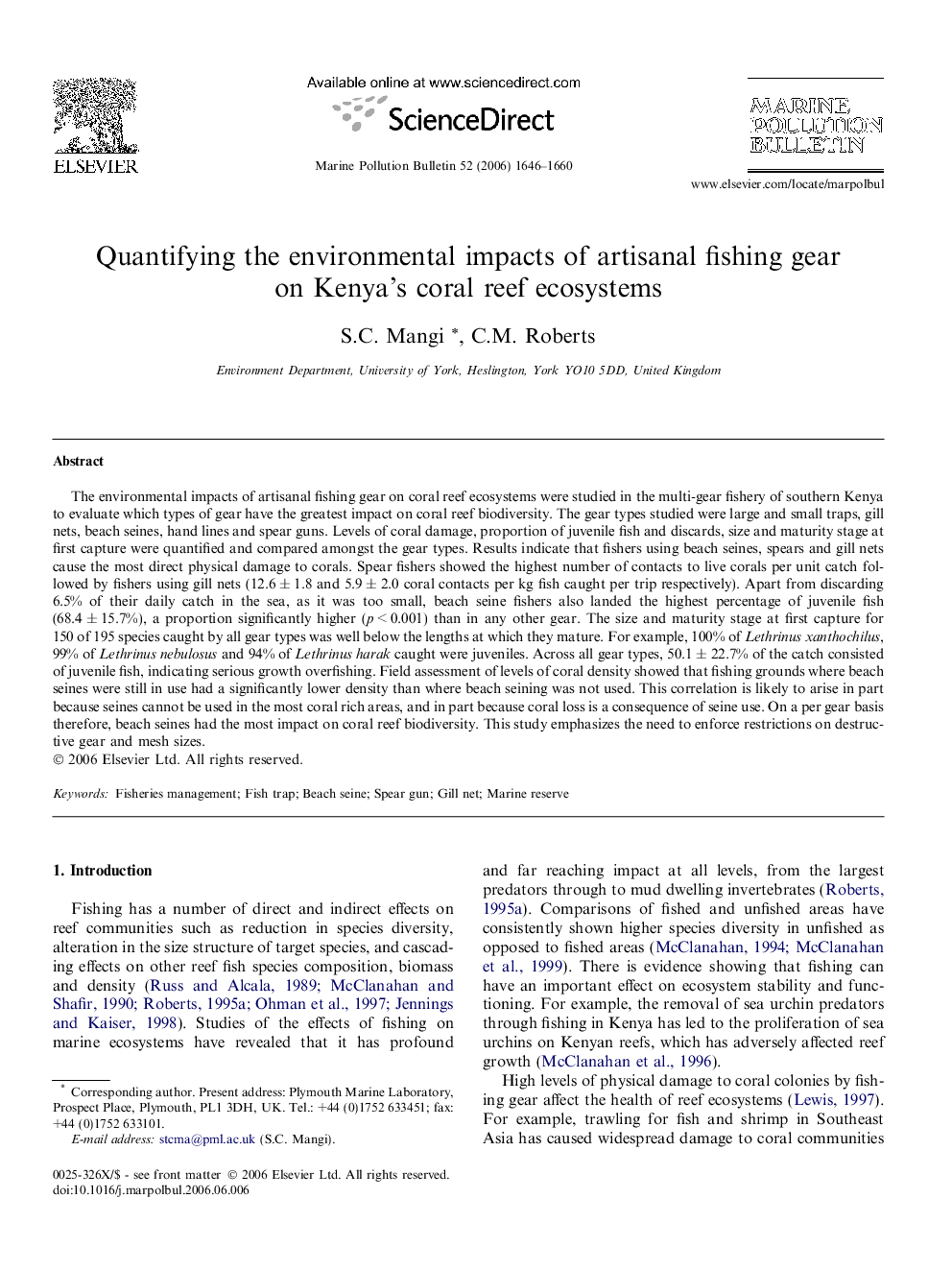| کد مقاله | کد نشریه | سال انتشار | مقاله انگلیسی | نسخه تمام متن |
|---|---|---|---|---|
| 4477922 | 1315743 | 2006 | 15 صفحه PDF | دانلود رایگان |

The environmental impacts of artisanal fishing gear on coral reef ecosystems were studied in the multi-gear fishery of southern Kenya to evaluate which types of gear have the greatest impact on coral reef biodiversity. The gear types studied were large and small traps, gill nets, beach seines, hand lines and spear guns. Levels of coral damage, proportion of juvenile fish and discards, size and maturity stage at first capture were quantified and compared amongst the gear types. Results indicate that fishers using beach seines, spears and gill nets cause the most direct physical damage to corals. Spear fishers showed the highest number of contacts to live corals per unit catch followed by fishers using gill nets (12.6 ± 1.8 and 5.9 ± 2.0 coral contacts per kg fish caught per trip respectively). Apart from discarding 6.5% of their daily catch in the sea, as it was too small, beach seine fishers also landed the highest percentage of juvenile fish (68.4 ± 15.7%), a proportion significantly higher (p < 0.001) than in any other gear. The size and maturity stage at first capture for 150 of 195 species caught by all gear types was well below the lengths at which they mature. For example, 100% of Lethrinus xanthochilus, 99% of Lethrinus nebulosus and 94% of Lethrinus harak caught were juveniles. Across all gear types, 50.1 ± 22.7% of the catch consisted of juvenile fish, indicating serious growth overfishing. Field assessment of levels of coral density showed that fishing grounds where beach seines were still in use had a significantly lower density than where beach seining was not used. This correlation is likely to arise in part because seines cannot be used in the most coral rich areas, and in part because coral loss is a consequence of seine use. On a per gear basis therefore, beach seines had the most impact on coral reef biodiversity. This study emphasizes the need to enforce restrictions on destructive gear and mesh sizes.
Journal: Marine Pollution Bulletin - Volume 52, Issue 12, December 2006, Pages 1646–1660